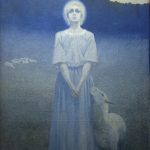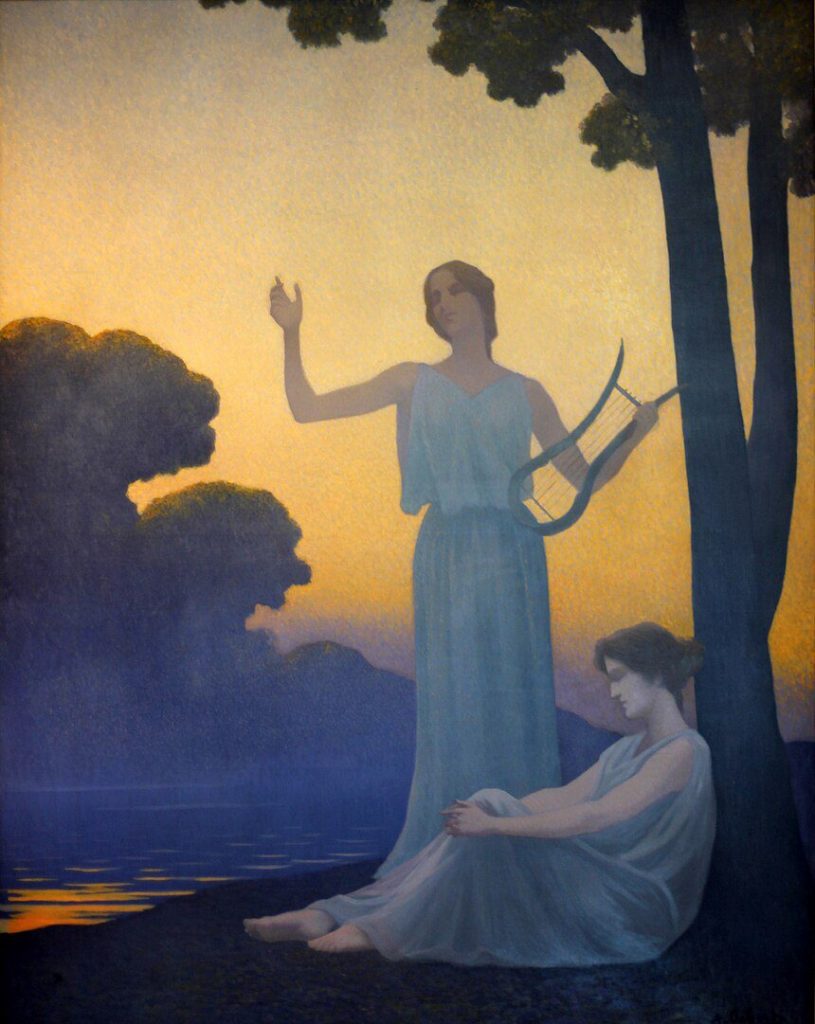
Alphonse Osbert, a distinguished French Symbolist painter, was born on May 5, 1857, in Bordeaux, France. Throughout his artistic career, Osbert played a significant role in the Symbolist movement, contributing works that explored the mystical, spiritual, and allegorical dimensions of art. His mastery of symbolism, combined with a keen sense of aesthetics, established him as a prominent figure in the late 19th and early 20th-century art scene.
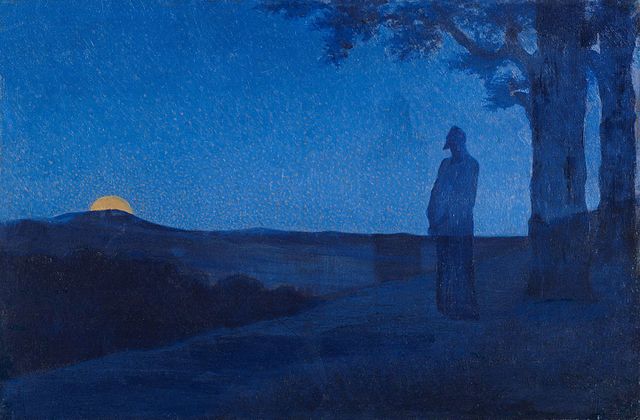
Osbert’s early artistic inclinations became apparent during his formative years, leading him to enroll at the École des Beaux-Arts in Bordeaux. His studies laid the groundwork for his development as a painter, providing him with the technical skills and academic foundation that would shape his artistic journey. Osbert’s exposure to the vibrant cultural milieu of Bordeaux contributed to the cultivation of his artistic sensibilities.
Towards Symbolism
In the late 19th century, France was undergoing a period of artistic exploration and innovation. The Symbolist movement emerged as a response to the naturalism and realism prevalent in the art world. Symbolists sought to convey emotions, ideas, and spiritual truths through symbolic and allegorical imagery. Alphonse Osbert found resonance in this movement, and his art became a manifestation of Symbolist principles.
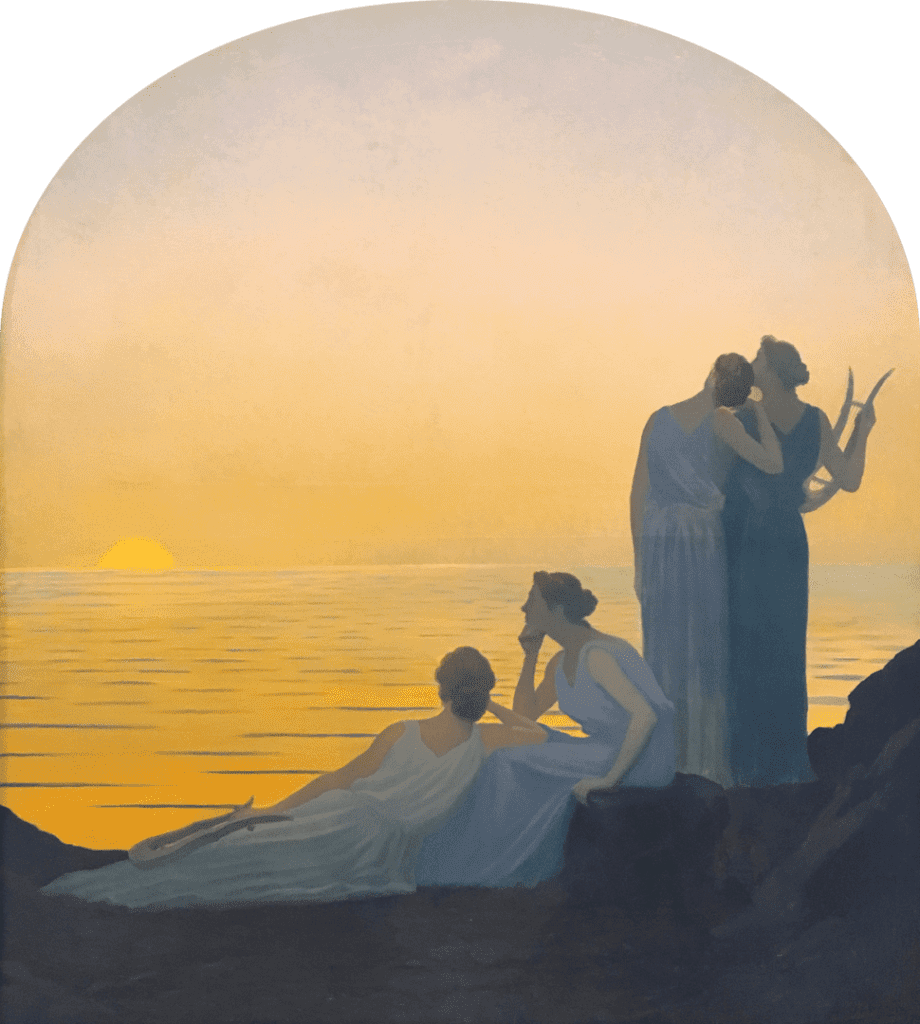
Osbert’s early works reflected a fascination with themes of spirituality, mysticism, and the ethereal. His paintings often featured otherworldly landscapes, dreamlike scenes, and visionary subjects. One of his notable early works, “Songe d’une nuit d’automne” (Dream of an Autumn Night), exemplified his commitment to exploring the mysterious and transcendent aspects of existence. The painting, bathed in a poetic ambiance, captured the essence of Symbolist ideals.
A rejection of naturalistic representation in favor of evocative and suggestive imagery characterized the Symbolist movement. Osbert’s paintings embraced this aesthetic philosophy, and his use of symbolism allowed him to convey complex ideas and emotions beyond the surface of the canvas. His works became a visual language for exploring the inner realms of the psyche and the spiritual dimensions of human experience.
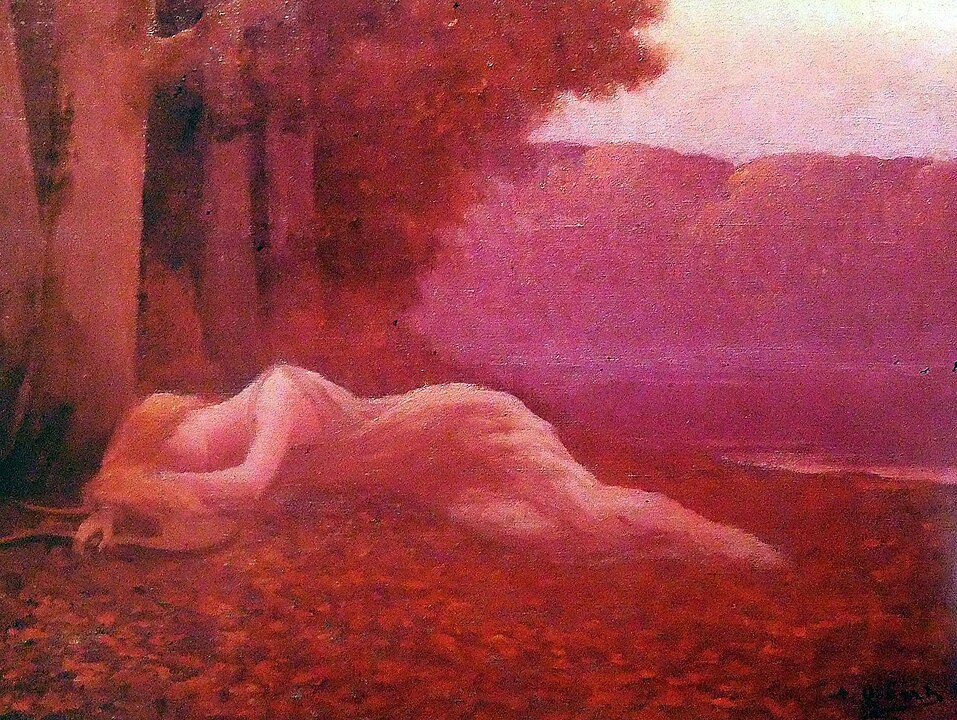
Osbert’s mastery of color and light played a crucial role in conveying the atmospheric and emotional qualities of his paintings. His palette, characterized by muted tones and a harmonious interplay of colors, contributed to the dreamlike quality of his compositions. The use of symbolism, combined with a sophisticated understanding of color, allowed Osbert to create works that transcended the boundaries of the visible world.
A pivotal moment in Osbert’s career came with his participation in the Salon de la Rose+Croix, an exhibition organized by Joséphin Péladan, a key figure in the Symbolist movement. The Salon de la Rose+Croix provided a platform for artists who embraced Symbolist and esoteric themes. Osbert’s association with this avant-garde salon further solidified his position within the Symbolist milieu and connected him with like-minded artists.
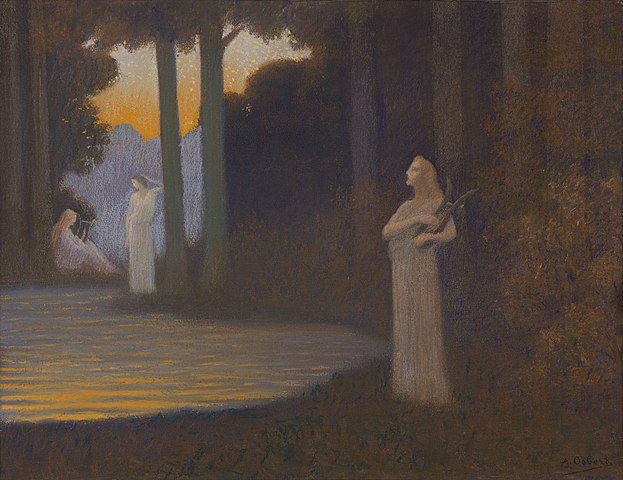
Throughout his career, Osbert maintained a strong connection to the Symbolist literary circles. He collaborated with poets and writers, contributing illustrations to literary works that shared the Symbolist ethos. This interdisciplinary approach, combining visual and literary elements, was a hallmark of the Symbolist movement and contributed to a rich tapestry of artistic expression.
One of Osbert’s notable literary collaborations was with the poet Paul Verlaine. He provided illustrations for Verlaine’s collection of poems titled “Fêtes galantes” (Gallant Festivals). The collaboration between Osbert and Verlaine exemplified the fusion of poetry and painting within the Symbolist context, where each art form enhanced the evocative power of the other.
Osbert’s engagement with Symbolist ideals extended beyond the canvas and into decorative arts. He applied his artistic vision to various mediums, including stained glass, ceramics, and tapestries. This multifaceted approach demonstrated his commitment to integrating art into all aspects of life, echoing the holistic aspirations of the Symbolist movement.
The turn of the 20th century marked a period of expansion and recognition for Osbert. His involvement in major exhibitions and salons garnered attention from both the artistic community and the public. Osbert’s paintings, with their transcendent themes and mystical allure, resonated with audiences who sought a departure from conventional artistic modes.
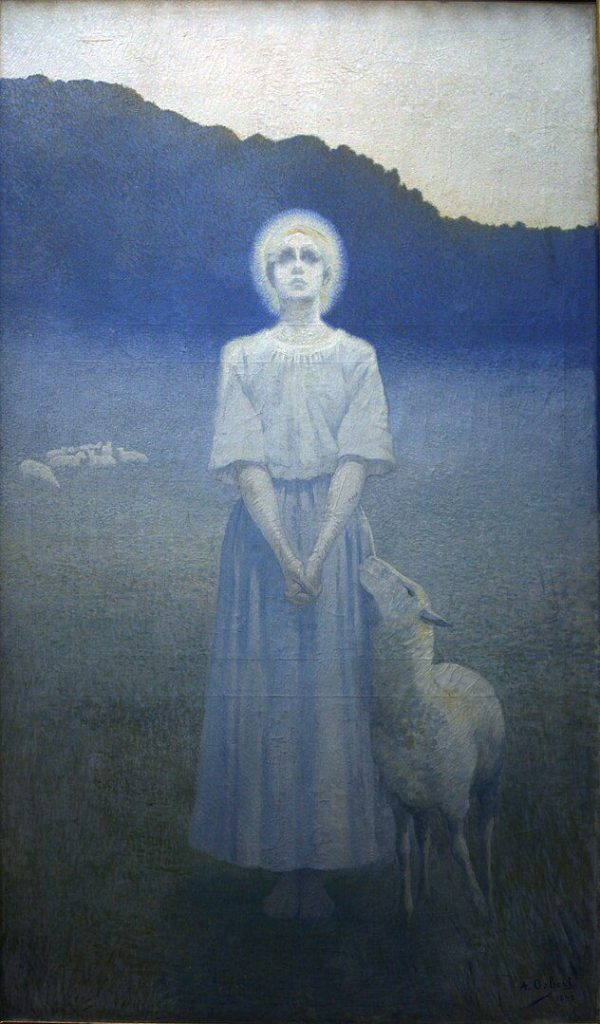
Osbert’s fascination with spirituality and mysticism found expression in his exploration of religious themes. He created several religious paintings that conveyed a sense of reverence and introspection. His religious works, such as “Sainte Geneviève” (Saint Genevieve) and “La Vierge à la Rose” (The Virgin with the Rose), blended Christian iconography with Symbolist sensibilities, inviting contemplation and reflection.
Preserving the Spiritual
The outbreak of World War I had a profound impact on the cultural landscape of Europe. The Symbolist movement, with its emphasis on the transcendental and the mystical, waned as new artistic currents emerged. Despite the changing artistic climate, Osbert continued to create works that retained the spiritual and symbolic qualities for which he was known.

In the later years of his career, Osbert’s artistic output continued to evolve. His paintings explored a more classical and mythological vocabulary while retaining the poetic and visionary elements characteristic of his earlier works. Osbert’s ability to adapt to changing artistic currents without compromising the core of his artistic vision demonstrated his enduring commitment to the transformative power of art.
Alphonse Osbert passed away on September 11, 1939, in Paris, leaving behind a legacy that resonates with the Symbolist ideals of mysticism, symbolism, and the exploration of the unseen. His contributions to the Symbolist movement, both in painting and the decorative arts, positioned him as a key figure within the broader context of French Symbolism.

Osbert’s art, characterized by its dreamlike beauty and spiritual depth, continues to captivate admirers and scholars alike. His paintings invite viewers to journey into the realms of imagination and symbolism, where the boundaries between the material and the transcendent blur. Alphonse Osbert’s legacy endures as a testament to the enduring power of Symbolist art to evoke the mysteries of the human soul and the ineffable aspects of existence.



